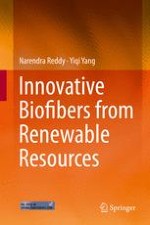2015 | OriginalPaper | Buchkapitel
18. The N-Methylmorpholine-N-Oxide (NMMO) Process of Producing Regenerated Fibers
Regenerated Cellulose Fibers
verfasst von : Narendra Reddy, Yiqi Yang
Erschienen in: Innovative Biofibers from Renewable Resources
Verlag: Springer Berlin Heidelberg
Aktivieren Sie unsere intelligente Suche, um passende Fachinhalte oder Patente zu finden.
Wählen Sie Textabschnitte aus um mit Künstlicher Intelligenz passenden Patente zu finden. powered by
Markieren Sie Textabschnitte, um KI-gestützt weitere passende Inhalte zu finden. powered by
